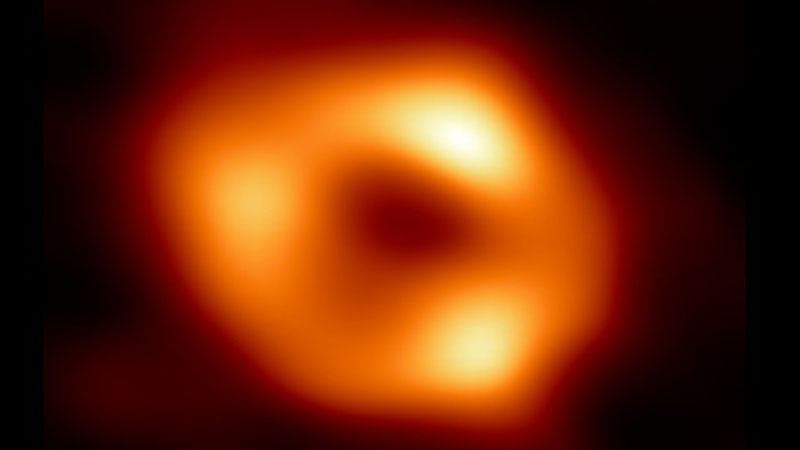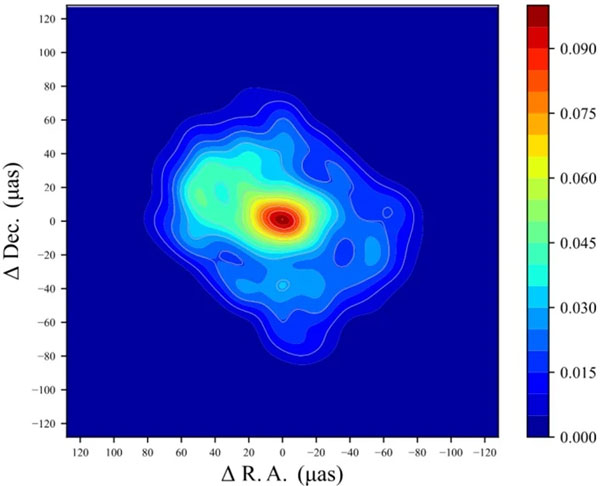Since the first image of the black hole at the center of the Milky Way was made after processing data obtained simultaneously from eight radio telescopes, it gives a somewhat conditional idea of the real appearance of such an object. Depending on the algorithm used to process the data, the black hole will look different each time, Japanese scientists said and presented their own view of the black hole at the center of our galaxy.

Photo of the black hole Sagittarius A* (Sgr A*). Image source: EHT
«Photos of the black hole M87* (the first ever) and the black hole Sagittarius A* (Sgr A*) at the center of our home galaxy were taken by the so-called Event Horizon Telescope (EHT). These are eight radio telescopes scattered throughout the Earth, which, thanks to their huge base, could obtain data in very high resolution. Then they all sent the collected information, recorded on hard drives, to the processing center, where they were brought together. This cannot be done with optical observations, but with digital radio data this is a solvable issue.
After several years of processing, scientists in May 2022 presented an image of the black hole Sagittarius A* in the center of the Milky Way. In general, its appearance is closer to a circle. The black hole itself cannot be seen, photons cannot leave it beyond the event horizon, but the accretion disk, from where matter falls onto the black hole, shines in all observation ranges due to friction and gravity. Actually, it is the accretion disk that is represented in all images of black holes.
Researchers from the National Astronomical Observatory of Japan (NAOJ) considered that EHT collaboration scientists made inaccuracies in data processing. The algorithm they used falsely represents missing data. For a more accurate interpretation, a different processing method should have been chosen.
«We speculate that the ring image was the result of errors during the analysis of EHT images, and that part of it was an artifact rather than a real astronomical structure,” the Japanese astronomers said.

«Real” image of Sagittarius A*. Image source: NAOJ
Data processing using an alternative algorithm presented the black hole Sagittarius A* as an object elongated from east to west. The eastern part looks brighter, which scientists explained by the Doppler effect – the accretion disk is flying towards us. The disk itself is inclined relative to the line of sight from the Earth by 40–45 °, and its rotation speed reaches 60% of the speed of light. Correct interpretation of the data provided more information than was obtained from the presentation of the official photograph.
At the same time, it must be recognized that today we can only speak with caution about the accuracy of one or another interpretation of the data with the help of which the appearance of black holes is restored. In addition to the difficulties in obtaining them, it is necessary to remember that space-time is significantly curved near such objects, and what can be understood there is a big question.